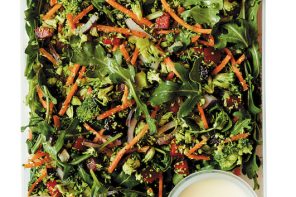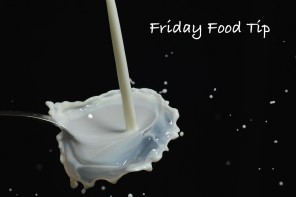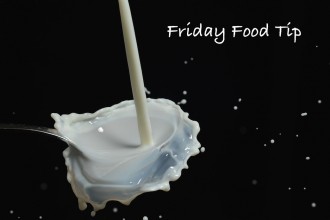
Adam Liaw is one of my favourite television presenters. He comes across as having no ego or pretence, just an understated passion for food and a quiet, gentle demeanour that is rare in the world of television. I’ve been fortunate enough to meet him on a number of occasions and that’s exactly how he presents in real life as well. It’s fitting then that the title of his latest book should be The Zen Kitchen (published by Hatchette Australia).
The book is presented as a compilation of “easy-to-prepare Japanese recipes and philosophies for the home kitchen to guide you and your family to healthier, more enjoyable meal times”. Liaw has drawn on the various threads of his life in putting the book together – his transition from working as a lawyer in Japan to winning Masterchef and falling in love with cooking. Now a family man, he met his Japanese wife while working in Tokyo and they now live in Sydney with their young family.
In The Zen Kitchen, he combines the wisdom of the east with a pragmatism born out of working in the corporate world for more than a decade. Acutely aware of the challenges facing the working cook, the recipes are easy yet impressive.
Dishes such as Teriyaki Pork and Mushroom Rolls, Spring Rain Noodle Salad with Spinach and Shiitake, Wagyu with Autumn Leaf Daikon, and Sashimi Salad are set to become new family favourites, while the Agedashi Tofu recipe is one that has converted countless tofu-haters into tofu lovers.
Food to celebrate and educate
“In Japan, food is something used to celebrate (and) educate,” says Liaw. “It’s more than just a part of Japanese culture, it is a totality of Japanese culture presented in its most tangible form. This is my fifth cookbook, and while my earlier books have all included many Japanese recipes, this is the first book I’ve written solely devoted to Japanese cuisine.
“I wrestled with the best way to communicate what Japanese food truly is, not just in the mechanics of how to make it, but to put it in context of the culture it’s entwined with so completely.
“Ultimately I decided that the best way to do that was the way most Japanese people learn about their own cuisine, which is not through the rote learning of recipes and measurements, but through the stories and idioms that tie culture and cooking together, for neither could exist without the other. We can learn as much about food from a story or proverb as we can from a measurement or method.”
With the help of his wife, Asami, Liaw discusses some of the ideas and attitudes around Japanese food such as “Medicine and food have the same origin”, “Eight-tenths full keeps the doctors away” and the real pearler, “Sleep soon after eating and you’ll turn into a cow”.
Their kids love these fruit jellies, in which a lightly sweetened water jelly encases delicious colourful fruits. Kanten is more popularly known outside Japan as agar agar. It has been used for making Japanese sweets for hundreds of years.
 FRUIT JELLIES
FRUIT JELLIES
Makes about 16 jellies
INGREDIENTS
Various fruits, such as strawberries, blueberries, lychees (tinned is fine), mandarin, kiwifruit, rockmelon
1 litre water
120g caster sugar
8g kanten (agar agar) powder (or according to packet directions)
METHOD
Prepare the fruit by cutting into bite-sized pieces, large chunks, decorative cuts or shapes. A variety of shapes, colours and sizes is good.
Combine the water, sugar and kanten in a medium saucepan and whisk over medium heat until the kanten and sugar are dissolved. Allow to cool until just warm to the touch but not set. You don’t want to cook the fruit.
Pour into a 1.5 litre capacity mould (e.g. a 20cm square cake tin) and press the fruits into the liquid. Allow to cool until set, then refrigerate until chilled. You may find it easier to line the mould but if you do, line it with baking paper, as plastic wrap may leave shapes in the base of the jellies. Carefully turn out the jellies and cut into individual cubes.
Alternatively, set the jellies in individual moulds. Individual moulds will make it easier to keep the fruits separated.
You need to follow the directions on the packet of the kanten if there are any. Brands may differ in their setting strength.
Recipe and images from The Zen Kitchen, by Adam Liaw, published by Hachette Australia and reproduced with their permission.
This story originally appeared in PS News online.
!! Buy The Zen Kitchen from Book Depository, with free delivery worldwide !!
Food Wine Travel gets a small commission on purchases through this link but it doesn’t cost you any extra.




Adam Liaw is a favourite of ours, too. So humble and yet so talented. Loving these jellies, Christine, it’s been years since I did anything with agar agar. x
Hi dear friend
Agar powder should be used to prepare this product
How long does it take to use this product?
According to Adam’s recipe, it varies depending on the brand of agar agar used (best to follow the directions on the packet).